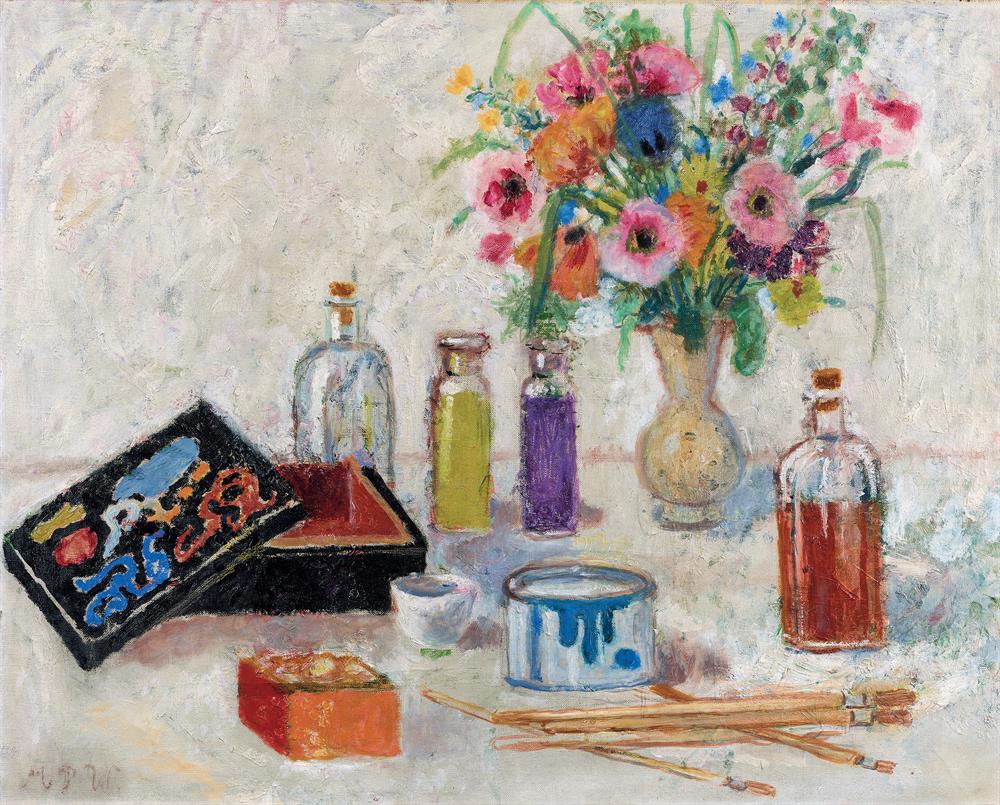
1896 Weferlingen - 1976 Rom
Still Life with Lacquer Boxes
Oil on canvas
61 x 76.2 cm
Monogrammed lower left: MPW
Stamp on the reverse: SAMMLUNG / DR. KURT HERBERTS & CO / WUPPERTAL as well as inscribed Stilleben Peifer (sic!) Watenphul
WV Watenphul Pasqualucci/Pasqualucci G 155
Provenienz:
Private collection, Dr. Kurt Herberts & Co., Wuppertal
Christie's London, 24 June 1997, Impressionist and Modern Paintings, Watercolours, and Sculptures, Part II, lot 252
Private collection, Germany
Literatur:
Grace Watenphul Pasqualucci and Alessandra Pasqualucci, Max Peiffer Watenphul Catalogue raisonnée, vol. I, Rome 1993, G 155
Paul Klee called Max Peiffer Watenphul "a fine artist" - and indeed he was throughout his life. Peiffer Watenphul attended the Bauhaus, where his friendship with Paul Klee began. He was also very close to Wassily Kandisky and Lyonel Feininger. However, the Bauhaus did not seem to provide him with what he wanted artistically and he soon left. Peiffer Watenphul traveled to Mexico, Tunis and North Africa, but he drew his inspiration exclusively from his stays in Salzburg, to where he returned again and again, as well as from the mysterious light and beauty of the Italian and, later, Greek landscape. Peiffer Watenphul masterfully captured the impressions of light and color he gained on these trips in his paintings. In addition to his landscapes, the artist's colorful and vivid flower still lives have also become well known. These works, created as early as the mid-1930s, have an emphatically poetic charm. The painting at hand is a wonderful example of this.
The individual objects are arranged in skillful harmony and rich tension: objects from his everyday life as an artist, such as paintbrushes, jars, bottles of colorful liquids, but also a beautifully decorated Japanese lacquer box and a gorgeous, radiant bouquet of flowers in a vase. The table surface and the background of the painting are exceptionally lively thanks to the brushwork and subtle nuances of color and can be distinguished mainly by a fine horizontal line adding a spatial dimension to the arrangement. Trends and styles were not decisive for Peiffer Watenphul. He worked freely, originally and largely uninfluenced, which makes his works timelessly beautiful and contemporary.
